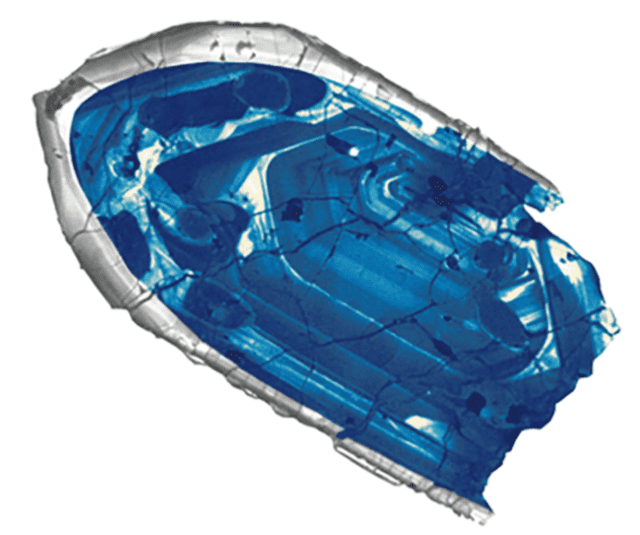
Two weeks ago, the National Oceanic and Atmospheric Administration (NOAA) issued an alert about a massive geomagnetic solar storm that commenced on August 11, leading to a breathtaking display of auroras. This natural phenomenon, fueled by a series of coronal mass ejections (CMEs), lit up the skies for over 48 hours and could be seen as far south as Alabama and Northern California. Among those who captured this incredible light show were NASA astronaut Matthew Dominick and commercial airline pilot Scott Bateman, each from vastly different vantage points. Dominick, aboard the International Space Station, took stunning photos of the aurora with the moon visible behind a supply craft and the Soyuz spacecraft set against a backdrop of bright green auroras. His images quickly gained popularity online, showcasing the awe-inspiring beauty of Earth from space.

On the other hand, pilot Scott Bateman had a unique perspective from within Earth’s atmosphere as he flew a long-haul route in an Airbus A350-1000. As he soared at 39,000 feet above the planet, Bateman witnessed the auroras unfold in vivid detail, capturing the scene on his iPhone 15 without any editing or filters. Describing the experience as “spectacular,” Bateman noted that the light show began as his flight passed over Chicago and continued until dawn over Ireland, where the auroras shifted to stunning purples. His close-up view from the cockpit provided an extraordinary, real-time connection to the same natural event that Dominick observed from orbit, highlighting the incredible beauty and power of our planet’s interactions with solar activity.



Even though summer is soon coming to an end, it can still be fun to create a DIY summer wardrobe piece for your kids. Instead of rushing out to buy shorts on sale, why not upcycle those old jeans that have seen better days? Whether your child’s favorite pair of jeans is getting too short, or they have some worn-out pairs lying around, you can easily transform them into stylish and unique shorts. With just a few materials like cute fabric scraps or Continue reading “How to Upcycle Old Jeans into Cute Cut-Off Shorts” »

This is an awesome pattern. The pattern is very well written and easy to follow! Looks amazing! The pattern is available in the link below… Continue reading “CROCHET BAT PATTERN” »

Planning a trip to Alaska takes on a whole new level of adventure with the opportunity to stay in classic airplanes converted into luxurious accommodations. Flying instructor John Kotwicki has created a unique “airplane amusement park” in southern Alaska, where old, decommissioned aircraft are transformed into Airbnbs. Continue reading “Plan a Trip to Alaska and Stay in These Classic Airplanes Converted into Luxury Accommodations” »

Nestled in the scenic town of Larkspur, Colorado, a unique two-bedroom home built around a 200-million-year-old red rock is now up for sale, offering a true blend of modern living and natural history. The $989,900 property, known as “The Rock House,” is more than just a residence; it’s a tribute to the geological wonders of the region. With a massive 45-foot-high ancient red boulder integrated into its design, this home is a dream come Continue reading “Flintstones-like Home is Built Around 200 Million-Year-old Red Rock in Colorado–And is Now For Sale” »

Scientists have discovered compelling evidence suggesting that Earth’s first rain fell as early as 4 billion years ago, much earlier than previously believed. Published in Nature Geoscience, the research reveals that the hydrological cycle—the process by which water moves between the atmosphere and the land—was active only 500 million years after Earth formed. By analyzing ancient zircon crystals from the Jack Hills in Australia, scientists detected unusually light oxygen isotopes within these minerals. These isotopes, typically associated with the interaction of water and rock deep below the Earth’s surface, indicate that meteoric water (water originating from precipitation) was present much earlier than once thought. This challenges the prevailing theory that Earth was completely covered by the ocean during this period and suggests that the planet may have had landmasses capable of supporting life much sooner.

The implications of this discovery are profound, as they provide new insights into Earth’s early history and the conditions necessary for life. The presence of rain 4 billion years ago implies that Earth had already cooled sufficiently to support liquid water on its surface, despite its fiery beginnings. This rapid cooling and the early existence of the water cycle would have created conditions conducive to the emergence of life within a relatively short time frame, less than 600 million years after the planet’s formation. As Dr. Hamed Gamaleldien and Dr. Hugo Olierook, the study’s authors, point out, this finding not only pushes back the timeline for Earth’s water cycle but also opens up new avenues for exploring how life on Earth began. The discovery underscores the importance of meteoric water in shaping the planet’s geology and, ultimately, its capacity to harbor life.

Handmade bespoke quirky kitchen dresser, made from Figured Sycamore with a solid aromatic Cedar of Lebanon carcass. Incorporating original handmade wooden hinges along with a grape vine hand carved out of the solid. Made entirely by hand this ethereal ground breaking design would sit equally well in Continue reading “Handmade bespoke quirky kitchen dresser” »

Nahjae Olin’s journey to winning the NYC housing lottery and securing a one-bedroom apartment for just $881 a month in the Bronx exemplifies the persistence required to navigate the city’s competitive affordable housing system. After moving back in with her family post-college in 2019, Olin faced the daunting task of finding a place of her own in New York City’s notoriously expensive rental market. Unsure of how she could afford an apartment, Continue reading “26-year-old won the NYC housing lottery, pays $881/month for a 1-bedroom apartment: How the process works” »

The Sun Valley tiny home, designed by Ridgeline Tiny Homes in Australia, epitomizes the philosophy that less is more. With its sleek all-black exterior and compact design, this tiny home makes efficient use of its 23.7-foot length and 15.4 square-meter interior. The sloping roof and triple-axle trailer foundation provide both mobility and style, while the abundant glazing ensures that the interior is bathed in natural light. The layout is intentionally simple and practical, featuring a ground-floor bedroom with ample headroom, eliminating the need for a loft. This design choice not only enhances the sense of space but also creates a more comfortable and airy living environment.

Inside, the Sun Valley home balances form and function. The living room is minimalist yet cozy, with a sofa and integrated storage that maximize space. The adjacent kitchen is fully equipped with a sink, a two-burner propane stove, a small fridge, and cabinetry, ensuring all the essentials are within easy reach. The bedroom, connected directly to the kitchen, offers a comfortable double bed with built-in storage and large windows that allow for plenty of natural light. Customization options, such as choices in color, cladding, and cabinetry, further add to the home’s appeal. While details on pricing and availability remain unknown, the Sun Valley tiny home stands as a testament to intelligent design and the efficient use of limited space, making it an ideal choice for those seeking a compact yet thoughtfully crafted living space.































